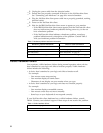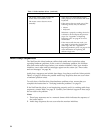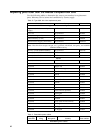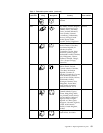
Table 8. NSBxxxx error codes and text messages (continued)
Error code Error message What you should do
NSB71509 DHCP option %d boot
server name %s failed
DNS.
Verify that the DHCP server settings are
correct.
NSB71515 Missing DHCP option
%d from server.
Verify that the DHCP server settings are
correct.
NSB71525 Missing DHCP client IP
address.
Verify that the DHCP server settings are
correct.
NSB71535 Missing DHCP client
directory and file name.
Verify that the DHCP server settings are
correct.
NSB71545 DHCP OFFER XID
different than DHCP
DISCOVER XID.
Verify that the DHCP server settings are
correct.
NSB71555 DHCP options exceed the
maximum allowable
DHCP option length.
Verify that the DHCP server settings are
correct.
NSB71605 DHCP offer from server
%s not valid.
Verify that the DHCP server settings are
correct.
BOOTP messages (NSB72xxx)
NSB72505 BOOTP options exceed
the maximum allowable
BOOTP option length.
Verify that the BOOTP server settings are
correct.
Network communication messages (NSB8xxxx)
NSB80509 Destination unreachable,
return code x%d.
Verify that there are no problems with the
network, and restart the thin client.
NSB80519 Failed ICMP mask
request.
Verify that there are no problems with the
network, and restart the thin client.
NSB80529 Failed ICMP router
solicitation.
Verify that there are no problems with the
network, and restart the thin client.
NSB80539 Domain Name Server
(DNS) error, return code
%d.
Verify that there are no problems with the
network, and restart the thin client.
NSB80549 Cannot fragment data
packet, data not sent.
Verify that there are no problems with the
network, and restart the thin client.
NSB80550 Transfer terminated by
user.
Restart the thin client.
TFTP messages (NSB81xxx)
NSB81509 Time-out waiting for
TFTP reply.
Restart the thin client. If this does not solve
the problem, verify that you connected the
network cable to the thin client.
NSB81519 TFTP error - %d %s.
Boot file server messages (NSB83xxx)
NSB83509 Unable to load file via
boot file server protocol.
Ensure that the boot protocol agrees with
your server settings in the NS Boot utility.
NSB83519 Cannot access boot file
from any server.
Verify your configuration settings in the NS
Boot utility, and confirm the server
configuration.
NSB83529 Cannot contact boot file
server x%s.
Verify that the boot server settings are
configured correctly.
Resolving hardware problems 39


















